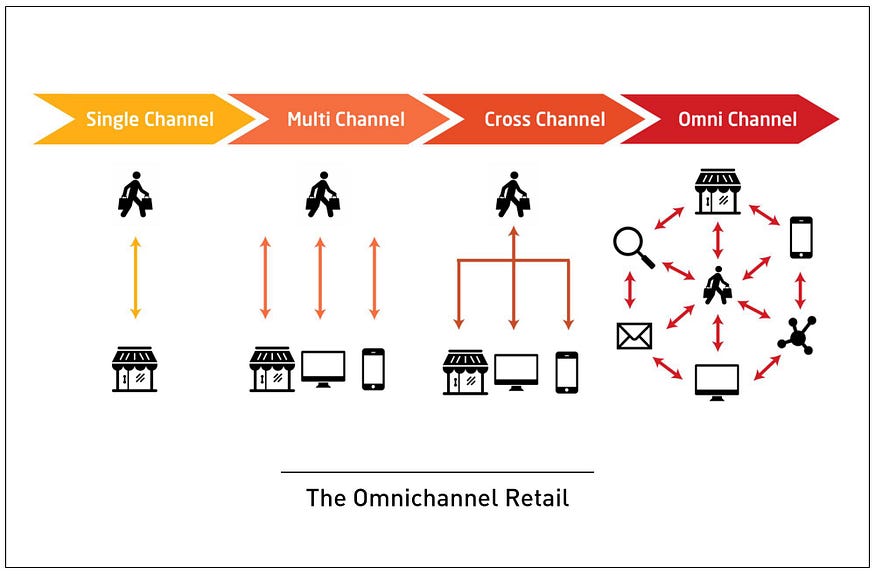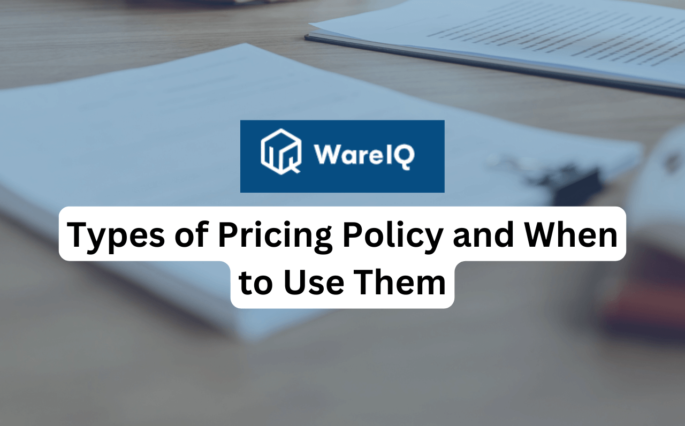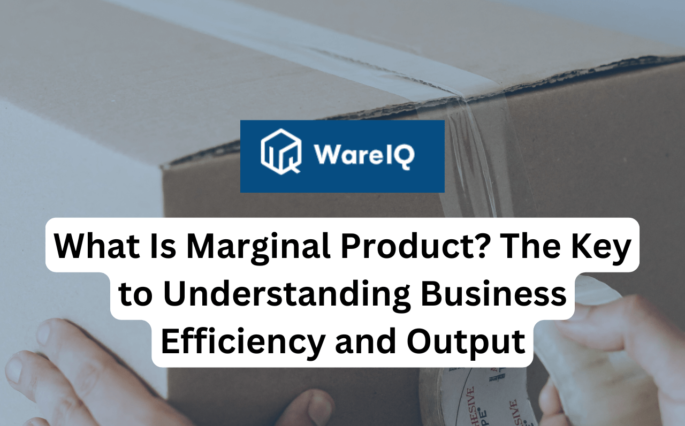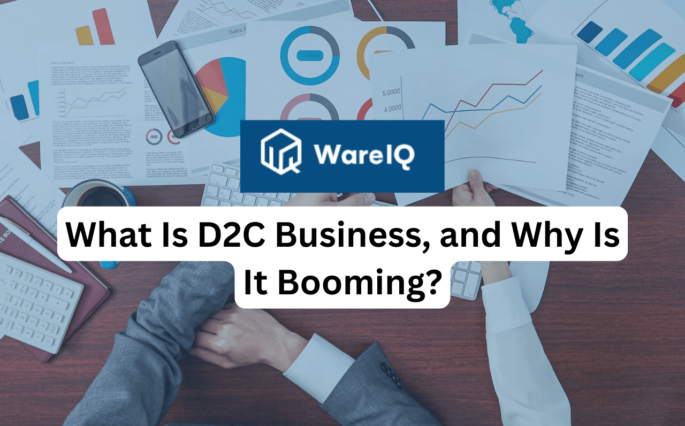Omnichannel Fulfilment Guide: Definition, Challenges, Benefits, and 5 Best Practices To Optimize Your Omnichannel Order Fulfilment Strategy for eCommerce in 2025

One of the most critical parts of the eCommerce system is order fulfillment. Unfortunately, managing offline and online inventories is getting more complicated as more people operate in the hybrid paradigm. Because of this, e-commerce businesses have chosen to use the Omnichannel Fulfilment Approach to convert their stocks to a hybrid mode.
With this strategy, firms may combine their inventory for physical and online channels and distribute it across them based on consumer demand. The companies also implemented a better industrial and warehouse management system thanks to the decentralised inventory, which increased delivery precision and speed.
Brands can easily optimise their supply chain operations and order fulfillment process with the help of the omnichannel fulfillment strategy. Thanks to the integrated inventory tracking system, customers can identify the products they’re looking for, which enables you to reallocate and redistribute inventory over various channels as needed. Additionally, the unified inventory enables businesses to experiment with additional sales channels without building a separate order fulfilment infrastructure.
- What is Omni-Channel Fulfillment?
- Challenges To Overcome While Adopting Omnichannel Order Fulfillment Strategy
- Benefits of Choosing Omni-Channel Order Fulfilment Strategy in 2025
- 5 Best Practices to Optimize Your Omni channel Fulfilment Strategy in 2025
- Conclusion
- How WareIQ as a 3PL Partner Helps to Generate Revenue and Manage Omnichannel Selling?
- Omnichannel Order Fulfillment: FAQs (Frequently Asked Questions)
What is Omni-Channel Fulfillment?
Omnichannel fulfilment completes orders across many sales channels using a coordinated manifestation procedure to improve supply chain operations. Adopting omnichannel fulfillment can be highly beneficial when improving the customer experience while lowering shipping costs and time.
The method’s ability to let companies utilise stores as fulfillment centers are one of its key benefits. This enables the companies to broaden their online reach by utilising the current physical infrastructure. However, using the Omni-channel strategy allows businesses to enter the e-commerce market without building an entirely new network of physical warehouses and fulfillment facilities.
The idea of omnichannel fulfillment is highly well-liked in sectors like FMCG, where many perishable commodities are involved in the operations. They may expand their reach and manage the supply chain of these perishable commodities more effectively using local resources thanks to the fulfilling technique.
Furthermore, while the idea of omnichannel fulfillment is very simple, it can be accomplished in several ways.
For example, some of them are-
- Transportation from the Warehouse
With this process, the goods are shipped straight to the consumer from a warehouse.
- Transportation from Manufacturer
Retailers have a significant advantage when they collaborate closely with their retailers. They have the choice to send it instantly and directly to the customer.
- Using a 3PL or fulfillment center for shipping
A lot of retailers collaborate with fulfillment facilities or 3PLs. In essence, this is drop shipping.
- Deliver from the Shop
Sometimes a consumer will place an online order and pick it up in a store.
- Delivery to Third-Party Partner
The newest omnichannel fulfilment technique is the last one.
With this approach, the business either establishes separate pickup centres or brokers with others.
This is typically only practical for smaller packages that can be kept in lockers.
The consumer receives pickup information when the order is delivered to that locker.
Is Omnichannel Fulfilment The Right Strategy For Your Organization?
By 2027, the market for retail omnichannel commerce platforms will be worth $16.9 billion. Business owners are continuously looking for new strategies to boost sales and expand in the congested and cutthroat world of retail. The advent of omnichannel fulfillment services has completely changed how modern selling is done by enabling physical establishments to respond to the changing needs of their clientele. Since online buyers may do independent research and price comparisons to locate the items they desire, omnichannel shopping benefits companies of all sizes in satisfying customer demands.
Omnichannel fulfillment can be the solution you’re searching for if your company is having trouble improving the customer experience and ensuring brand loyalty. Your fulfillment operations will benefit from incorporating an omnichannel strategy so customers can easily switch across online channels to locate what they’re looking for. And a rise in sales follows quickly when clients have a satisfying, memorable shopping experience with your brand.
You’ll also be one of the expanding retail stores if you switch to an omnichannel strategy from a multichannel or cross-channel model. Almost all retail companies use an omnichannel framework to manage their significant order volumes.
Types Of Omnichannel Fulfilment
The three primary forms of omnichannel fulfillment are as follows. Which are:
Warehouse Fulfilment
In this kind of omnichannel fulfillment, the online store owns or hires a warehouse to distribute goods to customers. When your firm starts to expand, this approach may provide problems with space and inventory control.
Several fulfillment service providers let you connect with their warehouse, even though many eCommerce enterprises employ this strategy from their warehouses. You may rent out space in their warehouse for your products.
Most frequently, there is a chance of more significant charges for processing and inventory storage, which can seriously hurt your organisation. On the other hand, fulfilment partners offer storage space in their warehouse and an end-to-end order fulfilment solution from when a seller collaborates.
Retail Fulfilment
Two forms of store fulfilment exist:
- Deliver from store
- Deliver to store
Businesses distribute goods to clients directly from the shop in the first type of retail fulfilment. These businesses hold their inventory on hand until a shipment is required. This type of fulfilment converts a store into a warehouse or distribution centre for smaller companies with physical and mortar stores but limited financial resources.
The second type of fulfilment is utilised by eCommerce companies that allow clients to pick up orders in-store. In this type of fulfillment, goods are delivered from the relevant warehouse or distribution centre to the physical shop of an eCommerce company.
Brick and mortar stores lack the necessary systems to operate as a fully-functional fulfilment centre or have real-time visibility into stock levels and return handling capacity, a drawback of this type of fulfillment.
Fulfillment by 3PL
This is one of the most excellent omnichannel fulfillment methods because it covers practically all of them. Customers place orders on your website, social media accounts, or any other platform through which you offer your items, and the 3PL with which you have a partnership fulfils those orders.
eCommerce enterprises can quickly and easily complete orders by outsourcing fulfillment to a 3PL, which serves as a conduit between the business and the end user. In addition, the administration of your inventory, shipping, and customers’ experiences after delivery are handled by 3PL companies.
WareIQ, an eCommerce fulfillment company, empowers online brands with a superior-tech platform to compete with Amazon like service levels by bringing their average delivery timelines from 5-10 days to 1-2 days.
Challenges To Overcome While Adopting Omnichannel Order Fulfillment Strategy
The Omnichannel Approach has some challenges. The best approach to solving these challenges is to identify the common problems and find an ideal solution that addresses the organisation’s needs.
Challenges in Inventory Control Across Various Channels
While using the Omnichannel fulfilment technique, it can be challenging to synchronise your inventory in real-time across several touchpoints, even though this is also a benefit. Since the same physical product may have many SKUs across various platforms, tracking the SKUs in real-time can be challenging.
With many sales channels, updating the inventory in real-time is also necessary but is more challenging. To address this issue, a centralised fulfillment platform must be used to track the numerous SKUs across various channels. This will enable you to maintain track of your inventory and ensure no inconsistencies in your inventory levels.
Order Tracking is Complicated
The modern internet buying experience includes live order tracking, which is crucial. Businesses can lessen customers’ post-purchase angst and buyer’s remorse by providing live order tracking. This improves the user experience for customers on your platform and the rate of purchase cancellations.
A substantial order tracking strategy must be implemented while integrating the fulfilment across several channels. This calls for establishing an open line of communication between buyers and sellers through the brands and marketplaces.
Inventory Visibility Issues
An omnichannel strategy needs you to be aware of the state of your inventory.
The last thing that retailers want is to offer customers next-day delivery yet cannot deliver on that promise. Solving this requirement can be challenging, especially during the busy holiday shopping season. The need is to create an effective omnichannel order fulfillment process that utilises an enhanced warehouse management system. In addition, you may efficiently plan your supply chain activities by employing inventory visibility as an accurate forecaster of future demand.
Retailers that implement omnichannel in the proper way—by setting up a metric for inventory visibility—will be better able to demonstrate a seamless customer experience while managing their supply chain.
Challenging Procedures Unique To Channels
The next difficulty for businesses is concentrating on channels separately.
How can a store guarantee complete client pleasure if all of its supply chain operations aren’t running smoothly? Unfortunately, the answer is that they cannot.
Integrating your supply chain across your shop, retailers, and other online sales platforms is necessary. The order fulfilment procedures will move more quickly with the synchronisation of sales channels.
Additionally, using omnichannel will allow you to use spaces in different ways. For example, showrooms can be found in warehouses. Ikea, for instance, employs this concept to create an incredibly economical supply chain.
The speed of delivery is crucial in today’s retail business when it comes to selling across channels. But ensuring the product is delivered on time to the final user is one of the most complex components. When customers make an online purchase, they anticipate receiving their goods within a few days at the latest.
A retail company’s inconsistent order fulfilment procedure may cause shipment delays, which may discourage customers from ever doing business with the retailer again.
Speed of Delivery
Using the right technology to predict upcoming service or shipping delays is an excellent method to ensure a smooth order fulfillment process.
Customers and businesses save money and time when they can purchase online and pick up in-store. Additionally, customers might buy more things when picking up an order.
Ease Of Returns
Your omnichannel logistics system should be configured with handling order returns as a top priority. Can a consumer who purchases one of your products online easily take it back to the nearby retail location or ship it back? The likelihood of the consumer making additional purchases in the future is slim to none.
Providing excellent customer service in omnichannel strategies requires a solid reverse logistics infrastructure.
Omnichannel logistics aims to give customers the most seamless purchasing experience possible. But a retailer can only do this if they can combine their eCommerce talents with the demands of managing a network of brick-and-mortar stores and distribution centres.
It’s Challenging to Create and Maintain Your Fulfilment Infrastructure and Strategy
If you lack the required infrastructure, implementing and launching an omnichannel strategy may be difficult.
Although expensive and time-consuming, you can always invest in a fulfilment warehouse, tools, technology, and an omnichannel fulfilment team. In addition, many businesses seek to collaborate with an organisation that can handle order fulfillment on their behalf.
An effective omnichannel strategy relies on synchronisation. Without the resources (like those that a fulfillment company has), it can be challenging to meet each channel’s expectations while managing day-to-day fulfilment issues like staffing labor, ordering supplies, and maintaining order accuracy.
Despite the size of these obstacles, your investment will more than compensate for them.
Benefits of Choosing Omni-Channel Order Fulfilment Strategy in 2025

Companies must constantly improve the consumer experience while lowering operating expenses as eCommerce becomes more and more prevalent. In addition, managing the fulfilment of orders from several sources can be challenging as a business expands. Here, the Omnichannel Fulfilment strategy delivers the perfect answer to all of your supply chain issues. The following are some advantages of employing the method and why should you choose Omnichannel Fulfillment:
Improved Inventory Control
Inventory management is one of the most crucial facets of an e-commerce business. However, real-time inventory tracking can be challenging as operations increase, especially if several touchpoints require separate inventories.
When employing the omnichannel fulfillment approach, you combine the complete fulfilment operations for all your touchpoints. This lowers the cost of inventory and warehouse management and improves the effectiveness of the entire fulfilment process.
Utilization of Stocks For Selling Across Channels
One of the most crucial elements of any e-commerce platform is the customer experience. A few elements that draw and keep a customer are quick-to-order fulfilment, real-time tracking options, and the availability of a range of products.
Using the Omnichannel Order Fulfillment strategy, you may consolidate the inventory for offline and online sales channels and bring the entire manifestation process under a single roof. As a result, your shipping times are improved, and customers can access your product through all available channels.
Save Operational Costs With Integrated Fulfillment Process
Companies can enhance their supply chain management to save operational costs and optimise the entire process. The Omnichannel Fulfilment Strategy enables you to link your sales channel and establish a single fulfillment process. In addition, the real-time warehouse management system enhances operational effectiveness and enables effective inventory management.
Streamlining your supply chain can also speed up deliveries and boost customer satisfaction. In addition, the integrated fulfilment process is made possible by the proliferation of alternative sales channels and cross-platform services like “buy online, return in store” services, which allow customers to customise their shopping experiences.
Improved Order Efficiency
Once their selling channels are streamlined into a single, synchronised platform, eCommerce businesses are frequently astounded at how much simpler omnichannel fulfillment becomes. A more efficient order fulfilment process, including more effective packing and precise deliveries, results from this system’s simplification. Furthermore, improved order management maintains cross-channel fulfillment’s consistency, reducing the requirement for continuing problem-solving.
Better Reporting Accuracy
Omnichannel fulfillment also has a lot to offer in terms of reporting accuracy. The success of your omnichannel approach will depend heavily on how well you manage the performance of your sales channels. However, you can quickly handle all your channels using real-time reporting provided by omnichannel software. In reality, software systems offer 24/7 reporting, allowing you to monitor KPIs and spot areas that need development immediately.
Increased Sales and Revenue
It may seem a bit apparent, but you’ll experience a spike in online orders when you optimise your eCommerce Fulfilment channels and make it easier for clients to purchase your goods. In addition, customers are more likely to return to your store if they know you’ll always have what they want in stock and available to ship (rather than give their money to a competitor). So, by selling your products over several sales channels, you can anticipate a significant increase in revenue.
Better Brand Recognition
Customers expect access to your products at any time and location, which may seem like a challenging task for a small business owner. However, selling on several websites and online marketplaces allows you the chance to reach a bigger audience of customers by promoting your brand (and your product listings). The better your brand is seen as a whole and the more likely it is to turn browsers into customers, the more visible your business is inside the eCommerce landscape.
5 Best Practices to Optimize Your Omni channel Fulfilment Strategy in 2025
You may improve the effectiveness of your omnichannel fulfillment strategy by using these strategies.
Smart Inventory Placement and Real Time Insight Into Stock Levels Across FC Locations
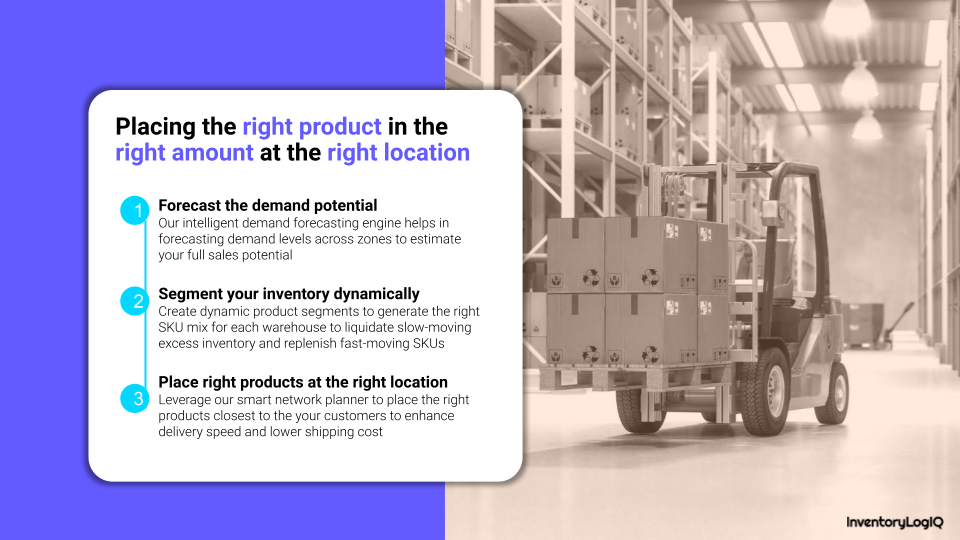
Being aware of the location of your products is essential for omnichannel distribution. To decide where to place inventory and where to fulfill particular orders, you need real-time insight into all of your SKUs, whether they are housed in a shop or a fulfillment center. If you’re planning to work with a 3PL, try out their inventory management system (IMS) to ensure you have the necessary visibility. It’s also crucial that your staff can easily use it. Understanding how frequently the IMS is updated is also vital.
Choose a 3PL That Offers Scalability and Flexibility
Some 3PLs manage consistent, predictable fulfilment volumes but struggle to handle unexpected volume surges without a significant time and expense penalty. They might not have a viable temporary labour alternative, or maybe their systems are incapable of handling these spikes.
It would be best if you were prepared for these increases in omnichannel distribution, whether seasonal, brought on by special offers, or by more effective marketing of your items. Please discuss this vital necessity with your 3PL until you feel confident in their approach and ability to handle big volume swings effectively.
Can your 3PL expand with you and offer more locations when demand necessitates expansion beyond the current footprint? This has grown in significance as businesses must fulfill two-day shipping commitments.
Make Certain Your 3PL Offers Productive Picking Operation
You want to reduce labour expenses, especially for pick-and-pack activities that need a lot of work. Not all fulfillment organizations have invested in a sophisticated warehouse management system (WMS), which is necessary for doing that. You should be able to do the following things with any WMS you consider:
- To cut down on journey time, analyse and bundle similar orders on the same pick cart. Excellent picker productivity is a significant profit driver because direct labor costs comprise about 35–40% of total operating expenses.
- Select the ideal carton size automatically to reduce shipping expenses. This reduces the time needed to choose the appropriate box. The technique also reduces dim weight charges from carriers that apply when transporting containers, which is more essential.
- To cut costs and increase accuracy, scan the items as they are picked up. Ensure your fulfillment partners are equipped with this capability; otherwise, you risk paying a more significant premium in picking error rates and picking error repair expenses.
Pre-Kitting of Orders With Several SKUs

The same SKUs are frequently requested at the same time for B2C fulfillment. With the help of an intelligent WMS system, you may efficiently pre-build most of these standing orders. For example, consider the scenario where two goods and another SKU are always ordered together. You can pre-select and box the two popular SKUs, so you must make one pick to fill an order rather than pick three products for every purchase. Pre-kitting is a volume-based procedure, so you choose complete pallets and pre-build orders as your employees have the time.
Select the Best 3PL Partner
A versatile 3PL is necessary for omnichannel order fulfillment since it must be able to handle pick-and-pack operations for B2C fulfillment and bulk distribution for B2B fulfillment. Direct-to-consumer and bulk manufacturing have vastly distinct production methods. Therefore, watch out for 3PLs that lack the B2C fulfilment experience you require. Before signing, visit the fulfillment facilities of each 3PL and ask to see how they operate concerning a client whose requirements and volume are comparable to your own. Then, you’ll be able to see how your account might be run that way.
Conclusion
Since the focus of every retail organisation is the client experience, businesses must adjust to the hybrid selling model that customers have begun to favour. Brands have started implementing the Omnichannel Fulfilment strategy to achieve this.
Brands must adapt their marketing strategies and channels to the latest trends because the digital world is continuously changing. For example, you can enter a new market without building a separate fulfilment infrastructure using the omnichannel order fulfillment strategy. As a result, firms can implement various marketing techniques without affecting the supply chain. Contrarily, customers receive a consistent experience over all platforms.
Brands may connect their merchandise from numerous online and offline touchpoints with this strategy. Additionally, this enables businesses to provide speedier customer service by utilising nearby neighbourhood stores to increase delivery efficiency. Furthermore, the brands may simultaneously manage a real-time inventory for every channel, enabling them to optimise supply chain operations by replenishing unsold stock across numerous channels. As a result, the company can list itself on various channels with just one physical item.
How WareIQ as a 3PL Partner Helps to Generate Revenue and Manage Omnichannel Selling?
WareIQ, as a tech-driven fulfillment partner, assists brands of all sizes in providing top-notch customer service across channels. WareIQ centralises logistics operations to meet client expectations with integrated solutions for order and inventory management and quick shipping.
WareIQ supports managing omnichannel order fulfillment thanks to a robust fulfilment network, technology solution, and dozens of interfaces with crucial e-commerce platforms, marketplaces, sales and social media channels, and even B2B fulfilling capabilities.
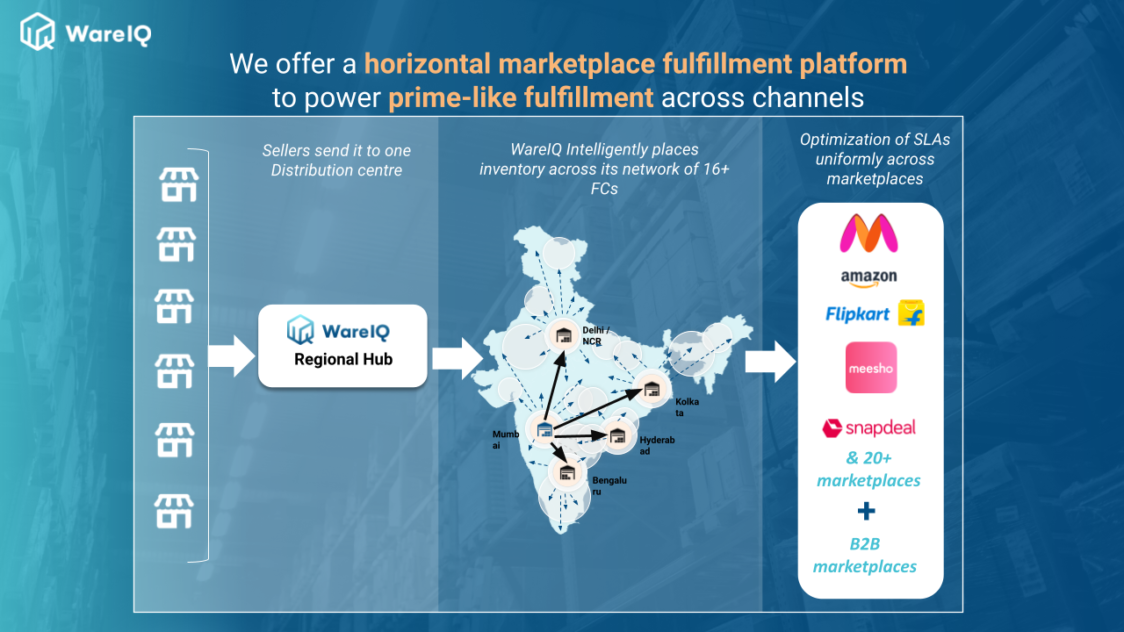
Across all sales channels, handling products, orders, clients, and shipping is simple. WareIQ even provides Next-Day Express delivery, which lowers cart abandonment and boosts sales for purchases placed directly with customers.
You may quickly sell your goods using a variety of platforms and methods, thanks to WareIQ. They integrate inventory management software with nationwide fulfilment to assist to get your products where they need to be in strategic locations.
- Pan India Fulfillment & Darkstore Network: Plug-and-play fulfillment infrastructure with no minimums, which is compliant with Amazon Seller Flex, Flipkart Assured, Myntra and other marketplaces
- Inventory & Network Planning Excellence: Best-in-class AI models for sales forecasting, product segmentation, and inventory management to reduce inventory by 40% and increase revenue by 10%.
- Vertically Integrated Fulfillment Tech Stack: Our Fulfillment Tech Solution supports integrations with 20+ top marketplaces & D2C platforms, and prominent national, regional and hyperlocal couriers, enhancing reach by covering deliveries for 27,000+ pin codes
- Supply Chain Productivity Applications: Integrate a host of supply chain productivity apps with a single-click to your existing CRMs, ERPs & accounting software to manage your logistics workflows from one command center. Use Apps like RTO Shield to get 100% RTO protection, Branded Tracking to turn your order tracking page into a profitable marketing channel, and many more.
Trusted by 300+ top Indian brands, we are helping them accelerate online sales and expedite their growth through a synergistic combination of advanced technology, robust fulfillment infrastructure & seller enablement services!WareIQ is backed by leading global investors including Y Combinator, Funders Club, Flexport, Pioneer Fund, Soma Capital, and Emles Venture Partner.




